Topics:
Nuisance and Wildlife ControlSubscribe now and get our latest blog and video content delivered straight to your inbox.
What Is Wildlife Exclusion?

Apr 22, 2024

You’ve likely heard stories of critters invading the homes of your friends and family. Perhaps it’s even happened to your home.
It usually starts with a rustling noise in your walls, ceiling, or floorboards. Maybe at some point, you smell animal feces or urine. And before you know it, you come to find that a litter of raccoons has nested in your attic.
At that point, you call a professional who comes and removes the animals. From start to finish, the whole process is unsettling. It costs money, and leaves you with an eerie feeling: what if they come back?
Well, there’s an entire industry dedicated to keeping critters from coming back to invade your home and even preventing them from invading in the first place. It’s called wildlife exclusion. And at HY-C, we manufacture a wide range of wildlife exclusion products under our HY-GUARD EXCLUSION brand.
But what is wildlife exclusion, anyway? How is it different from wildlife control or pest control? What kinds of animals can it help to keep out, and how do you begin to wildlife-proof your home?
In this guide, we’re going to cover those questions and more. We’re going to explain what wildlife exclusion is, which parts of your home are vulnerable to wildlife invasion, and how to shore up those vulnerable spaces.
By the time you’re finished here, you’ll have a solid understanding of the basics of wildlife exclusion, and you’ll have the information you need to fortify your home against local critters.
What Is Wildlife Exclusion?
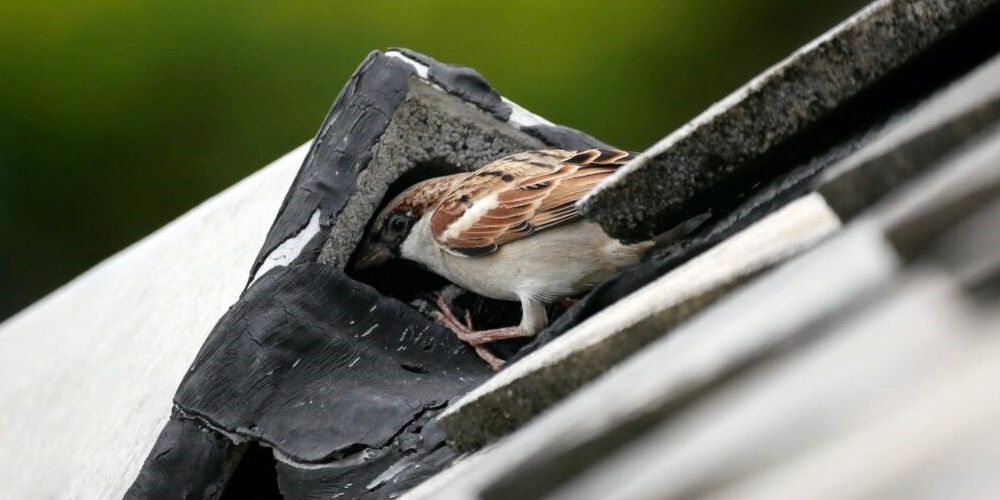
In order to explain what wildlife exclusion is, it’s helpful first to look through the entire pest control lens to distinguish wildlife exclusion from other aspects of pest control.
Broadly speaking, pest control involves the management or elimination of a species that may have (or is having) a negative effect on humans. We mostly think of pest control in terms of animals or insects, but it can also more generally include plants or fungi.
Pest control methods may include physically removing the pest from the space it has invaded; using poison, baits, or traps to capture or kill the pest; or using liquids or gasses to fumigate the affected area.
All of these actions — removal, trapping, and fumigation — take place after a pest has invaded. But wildlife exclusion entails preventative measures that stop pests from invading in the first place.
What Kind of Animals Can be Stopped by Wildlife Exclusion?
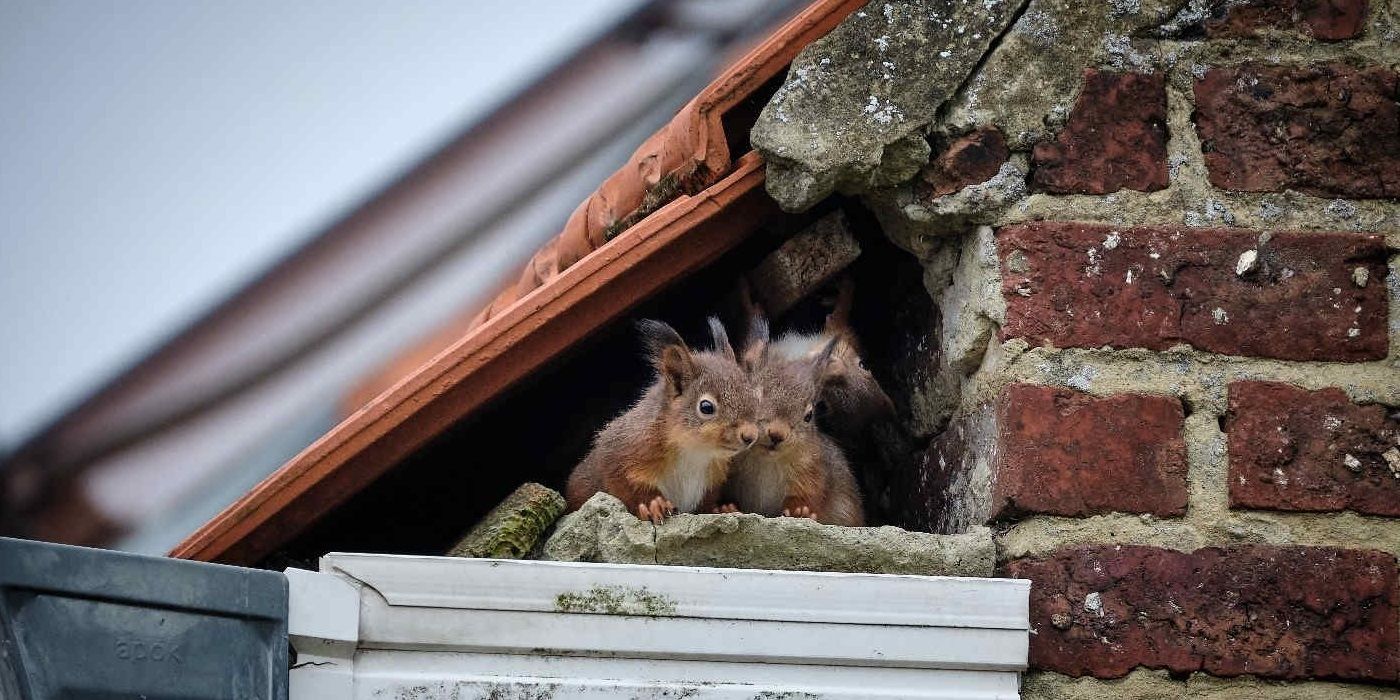
The species of animals subject to wildlife exclusion often depends on where you live. Some wildlife, like squirrels, are common throughout the United States. Others, like alligators, are more pervasive in specific regions.
Generally speaking, though, wildlife exclusion aims to stop whichever invasive species live in your area. And while the list may change depending on where you live, some of the most common species include:
- Bats
- Birds
- Raccoons
- Rats
- Mice
- Squirrels
- Opossums
- Snakes
Of course, animals aren’t the only species that invade homes. Insects are common culprits, too. Some of the most common insects that fall under the exclusion umbrella include:
- Wasps
- Bees
- Hornets
- Stink bugs
Where on Homes do Animals Tend to Invade?
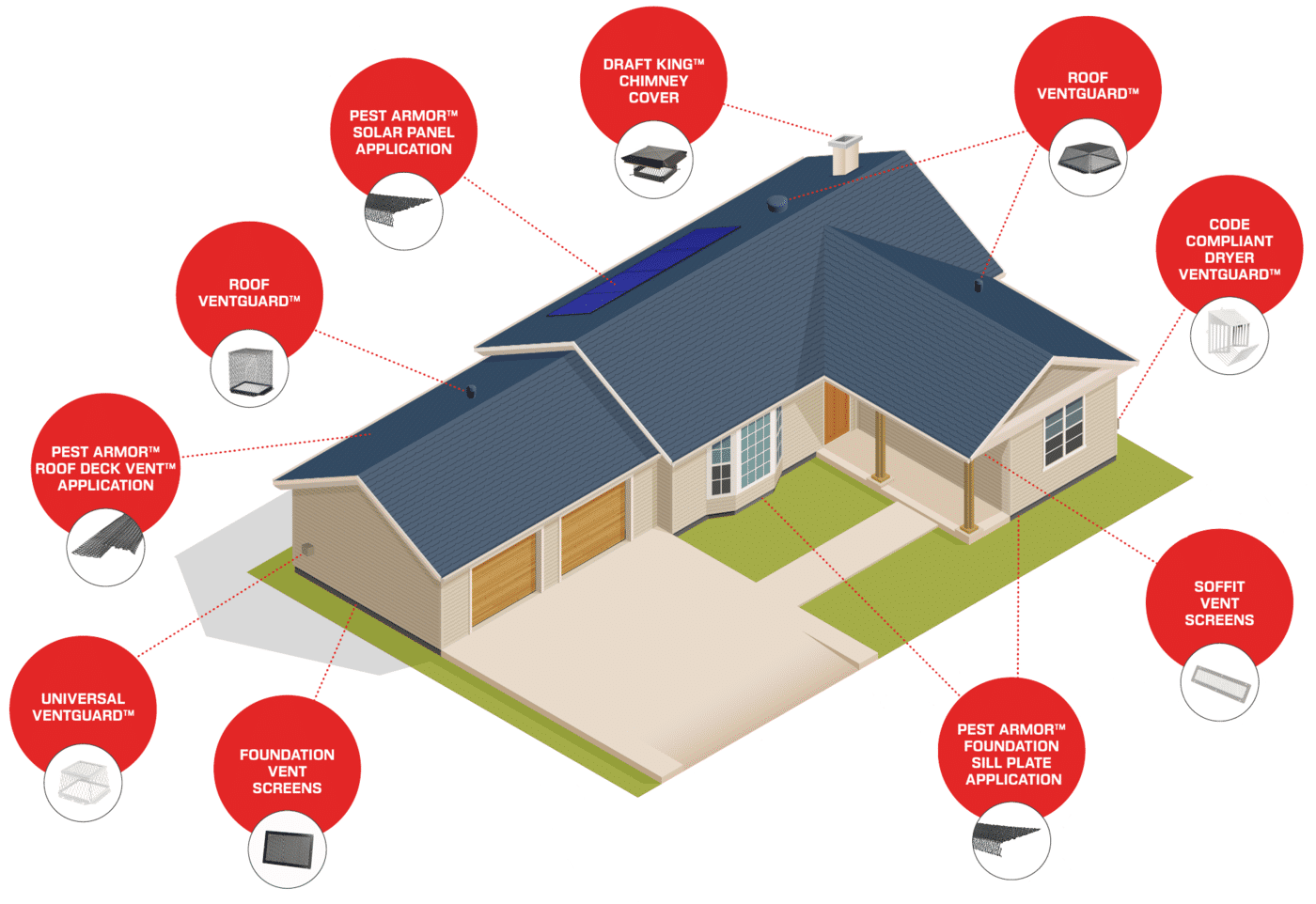
Believe it or not, homes across the country have several openings on them that are vulnerable to local wildlife. Most of these openings are the result of venting.
Many household appliances like clothes dryers, bathroom vent fans, and stove vent fans suck air out of your home. This air needs to be deposited through some kind of channel, and that channel is usually a vent that terminates somewhere on your house. Some of the most common appliance vents include:
- Chimneys
- Appliance roof vents
- Dryer vents
Homes also come with several static vents, too. These vents allow air to circulate through your home to prevent stagnation and mold buildup, usually in an attic or crawl space. Some of the most common static vents are:
- Static roof vents
- Gable end vents
- Soffit vents
- Foundation vents
While all of these openings are vital for proper appliance operation or air circulation, they also provide prime real estate for critters to move into your house. This is where wildlife exclusion devices come in.
What Are Wildlife Exclusion Devices?
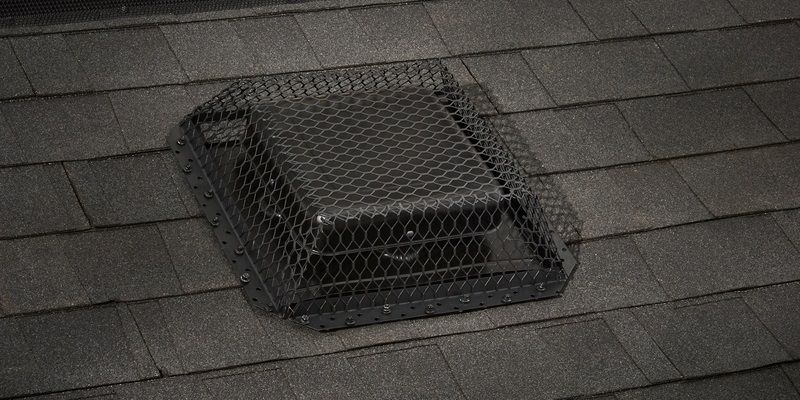
Put simply, wildlife exclusion devices are the preventative solutions that stop wildlife and insects from invading vents, openings, and other vulnerable points on your house. They’re typically made from steel, and they’re designed to ensure your home’s vents can still circulate properly while also locking out pests.
Several companies, like AAC Distributing and Bird Barrier, make wildlife exclusion devices. At HY-C, we manufacture a line of wildlife exclusion screens and guards under our HY-GUARD EXCLUSION brand. We serve several exclusion categories, including:
- Exclusion screens
- Exclusion guards
- Chimney protection
- Accessories
Who Installs Wildlife Exclusion Devices?
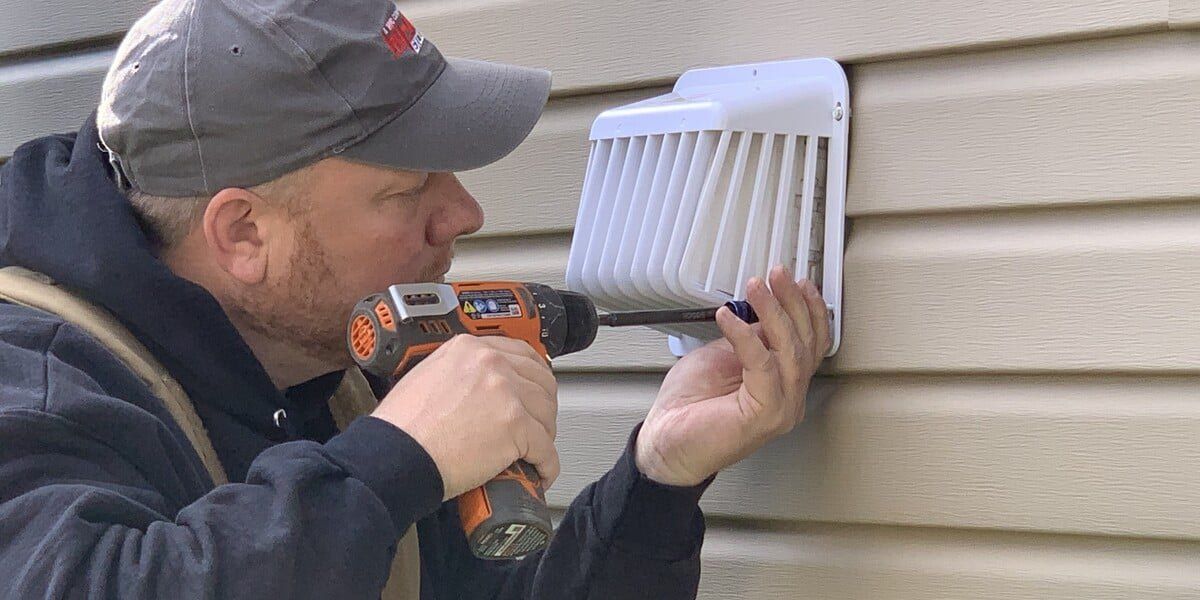
While the devices themselves may seem relatively straightforward, it’s important that only trained wildlife control operators install them. For one, several wildlife control devices require you to scale your roof to install them. Roofs are dangerous, and ascending them is better left to the pros.
It’s also important to understand that laws pertaining to the trapping, baiting, and handling of wildlife vary wildly by state. Not only that, but utilizing wildlife exclusion devices also requires a deep understanding of critters, their habits, and their habitats.
For these reasons (and several others), it’s better simply to call a professional to install wildlife exclusion devices on your home.
How Can You Get Started with Wildlife Exclusion?
Now that you understand what wildlife exclusion is, what kind of animals tend to invade, and that the installation of wildlife exclusion devices requires professional training, you may be wondering, “How can I begin to fortify my home against invasive species?”
A good place to start is the National Wildlife Control Operators Association, or NWCOA. This organization trains wildlife control operators across America in the latest industry innovations and exclusion tactics.
Through NWCOA’s wildlife control operator database, you can find a licensed, certified wildlife exclusion operator in your area. They’re trained to understand the types of wildlife to which your home may be vulnerable and to install the kinds of devices that can help to exclude them.
Be sure to utilize a NWCOA operator, and in the meantime, make sure you familiarize yourself with our HY-GUARD EXCLUSION product offering. This comprehensive collection of exclusion solutions encompasses your entire home from roof to foundation to ensure you stay pest-free.
